Health & Wellness
Supercharge Your Mind: How to Increase REM Sleep (Tonight!)
Published
2 years agoon

How to Increase REM Sleep
Have you ever woken up on the wrong side of the bed; feeling tired or irritable?
I think most of us can answer yes to those questions.
If so, then our bodies may be telling us it’s time we learned how to increase REM sleep.
Rapid eye movement or REM sleep is the period of sleep where our brain is the most active. You may have heard that this is where our most vivid dreams occur. It’s also theorized that REM sleep helps us process our emotions and retain our memories.
Interestingly enough, low REM sleep has been associated with difficulty learning and remembering, and some studies have even associated REM sleep with the ability to solve complex problems.
This is mysterious because it means that our dreams play a huge role in the way we psychologically and physiologically function.
It might very well be the case that we sleep so that we can dream…
But before unraveling that mystery, let’s get to the motivational part: Everyone has the power to get the best quality rest and to increase the quality of their sleep.
We’re going to show you 4 cool ways to make that happen by increasing REM sleep.
But first, it’s important to understand what happens during sleep for you to get a clear picture.
The Sleep Cycle: Understanding How to Get More REM Sleep
When you first sleep, you are in non-rapid eye movement. NREM has 3 stages:
- N1: This is very light sleep and is the shortest stage. You can easily be woken up at this point.
- N2– You remain in this stage the longest, and from here you go into deep sleep, or N3.
- N3– This is where deep sleep occurs, and it is the last stage before reaching REM sleep.
From deep sleep, you go into REM. It takes approximately 90 minutes to get from N1 to REM, and from there, sleeping patterns switch between REM and the cycles of NREM every 90-120 until we wake up.
Now that you understand the sleep cycle, let’s get into the 4 ways you can increase REM sleep.
Practice Sleep Hygiene to Get More REM Sleep
The last stage of the NREM cycle before reaching REM is deep sleep, so it’s important to stay asleep throughout the night because anything that gets you up will interrupt this crucial cycle. We can’t reach our much-needed REM sleep unless we’re able to complete the NREM cycle. It becomes important to then practice good sleep hygiene to ensure we stay asleep throughout the night, and to complete each cycle of NREM.
Sleep hygiene means:
- Keeping a solid routine: By going to bed around the same time every night, you remind your body that it’s time to rest.
- Put away the electronics: Electronic devices emit blue light which inhibits the body’s release of melatonin, affecting both the quality and quantity of sleep. Studies have shown that using electronics for more than 30 minutes within two hours before bedtime will affect sleep.
- Take a lukewarm shower: Your body temperature lowers as you reach bedtime. It drops during NREM, and slightly raises during REM, so regulating your body temperature before sleep is beneficial to increase deep sleep and get more REM sleep, and lukewarm showers are the best way to do that. Both cold and hot showers trigger extreme responses. With cold, your body temperature decreases but will have to increase rapidly afterward to offset the drop. Conversely, hot showers increase body temperature, but your body will have to decrease rapidly to offset the spike. Lukewarm is the best balance.
Maintain Your homeostatic Sleep Drive
The quality of our sleep is affected by more than just the act of sleeping. What we do during the day has a direct relationship with how we rest at night.
Our circadian rhythms— our body’s internal clock—are most affected by our homeostatic sleep drive. This is our body’s desire to rest the longer we stay awake. Our circadian rhythm is only as strong as the balance we have between sleeping and waking.
We can maintain our homeostatic sleep drive by spending more time outside. The amount of melatonin our body produces is directly related to how much time we spend in daylight, and melatonin heavily influences our circadian rhythm.
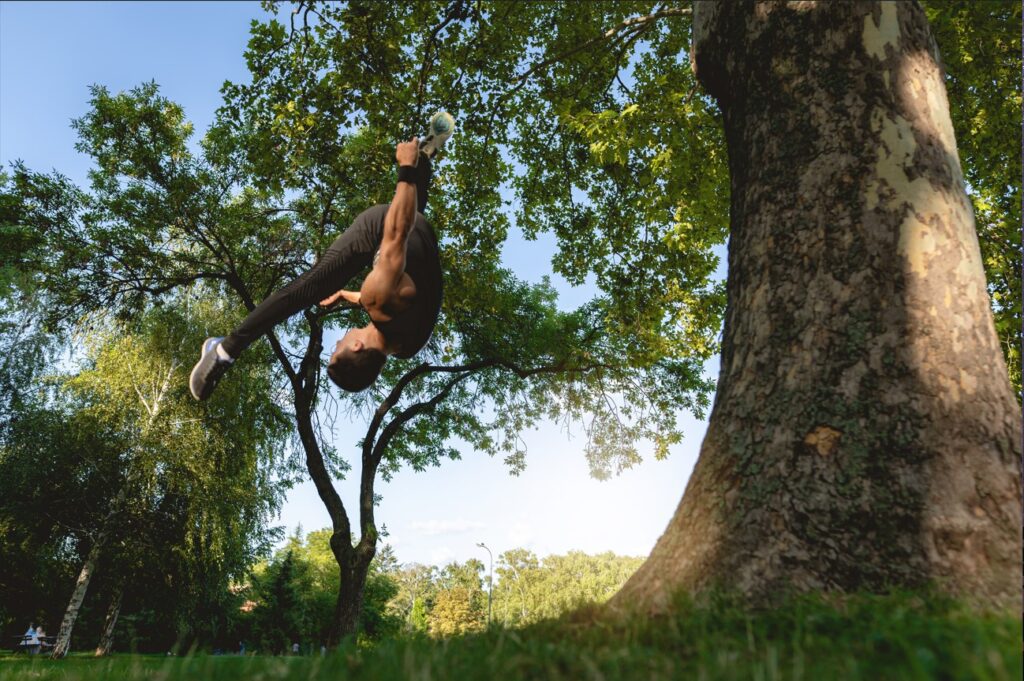
Become a Lifelong Learner
Even the activities we choose to engage in throughout our day affect the length of our REM sleep. It turns out that the most effective way to increase time spent in REM is to learn something new.
The more we engage our minds, the more time the brain will need to process the information—or even dream about it—and the more time spent processing information means more time spent in REM sleep.
The most effective types of learning are tasks that test our procedural memory and motor coordination. Procedural memory involves doing something for the first time, such as learning a new language or a new skill.
Our need for REM sleep increases even more when procedural memory is tied to a complex motor skill like jumping on a trampoline or playing a sport.
Interestingly enough, low REM sleep has been shown to impair procedural memory performance. This means that when you learn something, you will literally have to sleep on it for you to retain what you have learned in the form of an effective memory.
Who knew something like learning a new sport could help us get more REM sleep, and have such a profound impact on our brain?
Try Non-Sleep Deep Sleep Rest (NSDR)
So far, we’ve explained the sleep cycle, and have shown how to practice sleep hygiene to increase REM sleep. But this still leaves out what many find to be the most difficult part of the whole process of sleep: actually falling asleep.
The time it takes to fall asleep can interfere with our circadian rhythms. If we need to go to bed at 10 to complete the NREM cycles necessary for REM sleep, but it takes us an hour to fall asleep, then we run the risk of oversleeping or interrupting our circadian rhythm.
If you’re still having trouble getting to sleep after practicing good sleep hygiene and attending to your homeostatic sleep drive, try what Stanford neuroscientist Andrew Huberman calls NSDR or non-sleep deep rest.
NSDR is not a meditation. It is a form of guided relaxation that involves breath control and concentration. The basic protocol only takes 10 minutes to complete, so it’s a practical way to prepare our bodies for sleep. And believe us, it’s pretty wild!
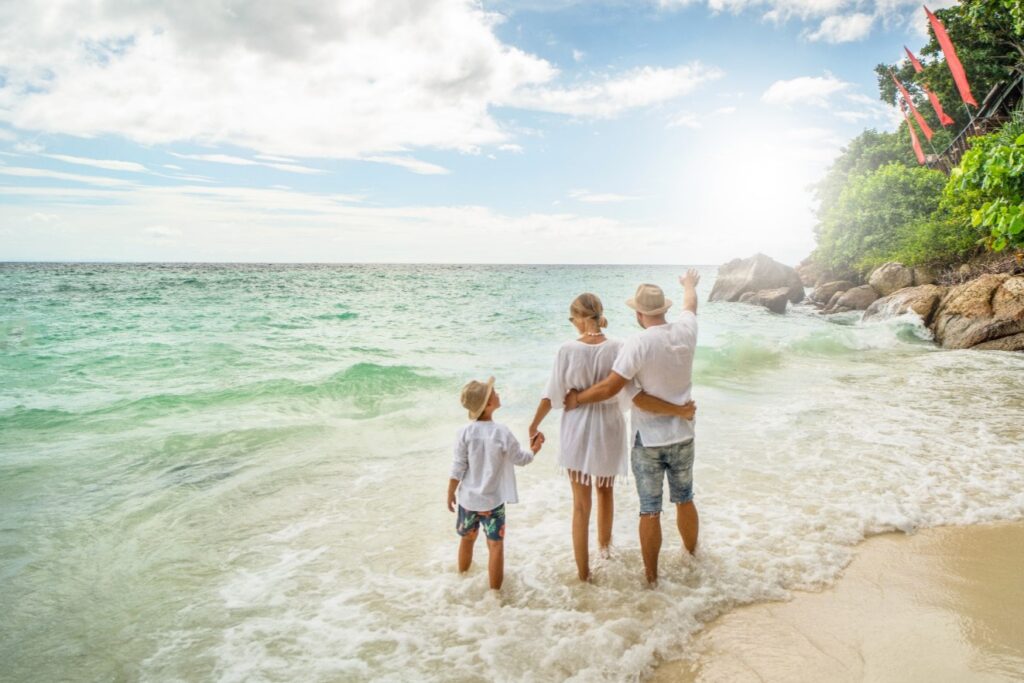
The Mystery of Sleep and Dreaming
Have you ever thought about the difference between a memory and a dream?
Think back to your earliest memories for a moment. Is there anything that differentiates a dream from a memory?
Both appear like visions in our minds; like movies played back. You may say that the difference between the two is that your memories actually happened in reality, but the question remains:
how different can dreams and memories really be if they both appear like memories?
Although the benefits of sleeping are understood, why we sleep remains a mystery to scientists. There are only theories, and a very common one is that sleep consolidates memories. Studies suggest that dreams strengthen memories by getting rid of unimportant ones. Without dreams, we may not be able to remember anything new because we would be remembering too much, and that would be too much for the mind to handle.
Interestingly enough, low REM sleep has been associated with trouble remembering, and even an increase in the risk of dementia. So I pose a fun theory:
We sleep so that we can dream, and we dream because we hold on to things that we remember. Even deeper than this is that DNA is a form of memory, so could part of the reason that we sleep be that we hold the memory of everything before us?
You may have heard the phrase “Tomorrow is a brand-new day.” Well, yesterday only exists because you remember it, and feeling like tomorrow is different than today only happens if you’ve slept, because if you haven’t slept, then tomorrow still feels like today.
And maybe that’s why dreams feel like memories, and memories feel like dreams… because without sleep we would have neither memories nor dreams, and we need one to complement the other.
If you would like to read up on an interesting correlation between dreams and goals, check out my article 3 Cool Quotes for Success and Their Powerful Meaning for some more inspirational insights.
A Review of How to Increase REM Sleep
Sleeping and dreaming may be a mystery, but knowing how to get the best quality sleep doesn’t have to be!
If you want to learn how to increase REM sleep, just remember these 5 things:
- Practice good sleep hygiene
- Get plenty of natural light outdoors to maintain your homeostatic sleep drive.
- Increase your brain’s need to process information by learning new skills.
- Try a technique like non-sleep deep rest to get to sleep faster.
Alex Nagel is a content writer and writing tutor with a degree in English literature. He combines his academic research skills with his training in critical thinking to provide valuable news insights.

You may like
-


January Brain Exists, But You Can Beat the Winter Blues. Here’s How
-


Meet AMIE, Google’s Articulate Medical Intelligence Explorer
-


3 Mind-blowing Benefits of Viruses You Should Know
-


The Complete Guide to High Intensity Training (HIT)
-


Improving Mental Health With Kindness
-


Dr. Michiaki Takahashi is Proof That Anything is Possible

Improving Mental Health With Kindness
Have you ever wondered what you can do to instantly lift your mood?
A simple act of kindness can do just that.
There are many ways of improving mental health with kindness. Two of the most relatable are when you act as a known “giver,” such as helping an elderly person across a dangerous intersection, and the second way is to be the unknown “giver”—this one works as a pay-it-forward act of kindness. It includes things like paying for a stranger’s meal or coffee order without contact with the person you are helping.
Regardless of which act you choose; it lifts the spirit. As humans, many of us are taught from childhood to be kind, polite, and helpful. After the act is done, there is praise from the authority figure who is teaching the mind of the young. Smiling, clapping, or giving positive reinforcement, feeds the child’s soul and raises him or her to associate with kindness.
This is no different as an adult. We need to give kindness because kindness is a quality that is essential for mental health.
How does Kindness Improve Mental Health?
According to Professor Shahram Heshmat, when people are kind, it gives them a “helper’s high” which lowers stress hormones like cortisol. This allows the fight-or-flight response to calm down.
We live in a highly volatile world, especially these last several years. People are rife with angst, frustration, and a “me first” attitude. If you are feeling any of these, it is important to feel like you are part of a world where others sometimes feel the same way. Kindness helps us relate to others. By performing a simple act of kindness, you bring yourself back to a state of calmness, and even joy.
A simple, genuine smile at someone can go a long way for your mental health. Doing kind things will improve your social connection with others, which in turn will make you feel better about yourself. Little by little, mental health can greatly improve.
Improving your mental health with kindness is a cycle. Not a vicious one, but one that is upbeat and inspirational.
Kindness Also Means Accepting Kindness from Others
Sometimes, it could seem that kindness does not come easily to some people, but kindness is a quality, and there are two simple ways to improve mental health with kindness:
- Perform acts of kindness
- Accept acts of kindness from others
For instance, let’s say that you are at a grocery store. You just finished paying for your goods and go to grab your bag; it splits, and all the contents in that bag fall to the floor.
As you scramble to rebag the contents, a stranger helps you by grabbing another bag and holding it out for you to fill it up.
What do you do?
If you decide to smile and tell them thank you, it boosts your positive hormone, oxytocin. You just took the first step to improve your mental health without realizing it. A genuine “thank you” can be very powerful.
“Your presence is an opportunity for others to do good things. This makes you a very important figure in people’s lives.”
– Inspiring click: 15 small things that make you happy in big ways

IC INSPIRATION
There are multiple ways to improve mental health. The purpose of this article boils down to one thing: KINDNESS MATTERS.
It not only matters to the person who is receiving the kindness, it also matters to the person giving it.
You can improve your mental health with kindness and lift another person’s spirit.
By putting a smile on another person’s face, you make it easier to keep a smile on yours.
Health & Wellness
Forest Schools: Where Kids Grow Brighter and Nature Thrives
Published
2 years agoon
23 November 2023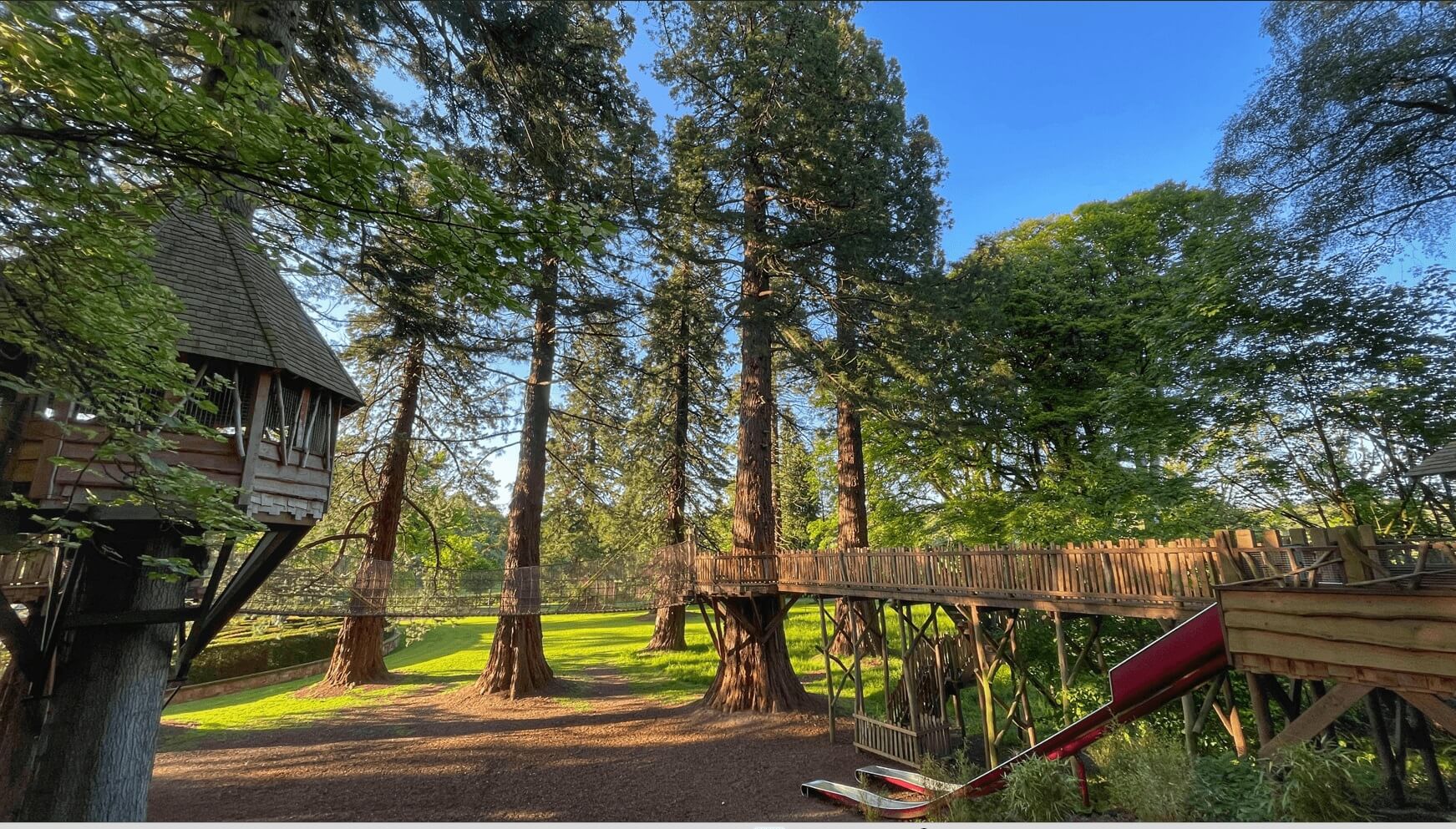
Forest Schools
Nature creates a sense of awe and curiosity for kids that no other environment can rival. That’s why forest schools are educational marvels that come with some amazing benefits for children.
Forest schools—or “skogsmulle,” as it is known in Swedish pedagogy—provide a transformative way to educate kids. These schools aim to encourage learning and independence by nurturing play, exploration, and supported risk-taking in an outdoor environment.
These schools can help address the addictive screen-scrolling that many children have with their phones and tablets. By fostering a balance between time spent outdoors and using technology, children can have productive experiences that benefit them greatly as they grow.
What are Forest Schools?
Forest schools are an experiential approach to education that allows children access to outdoor environments with the intention of provoking curiosity, action, and creativity. They typically run full-year, and the outdoor education inherent in forest schools creates an environment that gives children the opportunities to explore, absorb, and have fun as they interact with nature.
Children interact with grass, leaves, frogs, insects, rain, sunshine, and seashells, and we can’t forget the good old pinecones. The environment spikes the children’s curiosity, allowing them to ask questions, and the learning process continues.
Where did Forest Schools Originate From?
Forest schools come from Swedish pedagogy. Skogsmulle or Mulle is a Swedish fictional forest creature that introduces kids to nature. He’s the central figure in the concept of forest schools, depicted as a happy-go-lucky forest gnome that accompanies kids in the woods, singing with them and telling them stories about the forests.
Gösta Frohm, developed the concept of forest schools in the late 1950s while he was working with Sweden’s Association for Promotion of Outdoor Life. Frohm molded the educational concept around Skogsmulle, making it synonymous with forest schools.
Seven decades later, forest schools have been developed and improved by early education stakeholders in Sweden and beyond. Today, we have forest schools in the UK, Finland, Norway, Latvia, Russia, Japan, and the US. Some have “imported” the concept of Mulle, while others like Japan and Latvia have incorporated their own culture and system into forest schools.
Why are Forest Schools Important?
Forest schools act as a buffer from the endless scrolling done on tablets and phones. Kids can spend the entire day scrolling through their tablets, and we have yet to fully understand how this affects them. Children have an exorbitant amount of energy, and it used to be that they would spend all of that energy outdoors. However, with the advent of technology, incentives must now be created for them. Since children have to be educated, forest schools make it so that those incentives are inherently part of the educational process.
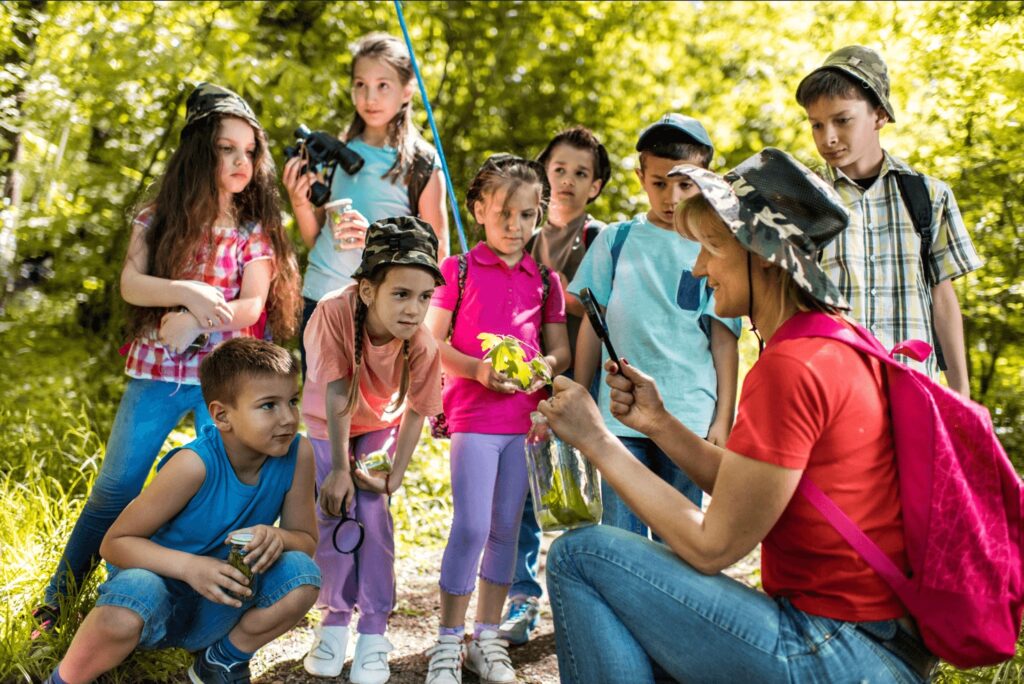
Supported Approach to Risk
Forest schools provide learners with an environment that constantly expands children’s ability to solve real-world problems, building confidence and self-esteem. One of the main philosophies of Skogsmulle is that children should be risk-aware, not risk-averse.
If you would like to know how much of a risk taker you are, then read our article, Taking Risks: Why It’s Hard to Take Risks But Why You Should.
The educational nature of forest schools goes beyond learning the risk of physical harm. Besides knowing the potential dangers of sharp tools or campfires, learners take emotional and social risks. They are encouraged to try something new, ask questions, and apply leadership skills.
For instance, Terra Moyo International School in Nairobi focuses on fostering children’s life skills by helping children learn by taking action and “reflecting on the experience.”
These unstructured but carefully watched environments introduce kids to the benefits of taking risks, trying new things out, and developing decision-making skills while interacting with other children and receiving lessons from teachers.
Holistic Development
Outdoor learning is not just about imparting knowledge. Forest schools prioritize holistic, well-rounded learning by addressing physical, emotional, and social aspects involved while being out in nature. Children can take centerstage since these programs place emphasis on their interests and talents.
Guiding kids while they drive their own learning process can have a more profound effect on their academics, health, and overall well-being.
This is a different approach than traditional classroom environments where a set curriculum is followed, and where tablets, phones, and computers are an integral part of the education process.
Learning that is Limitless
Close your eyes and visualize any natural setting for a second. If a child visited your mind’s nature vista, how many questions would they ask? How much would they learn?
As you can see the possibilities are endless. In nature, kids can learn about colors, numbers, animals, plants, geographical features, seasons, and more.
Spending time outdoors provides a more imaginative and active experience than passive screen time.
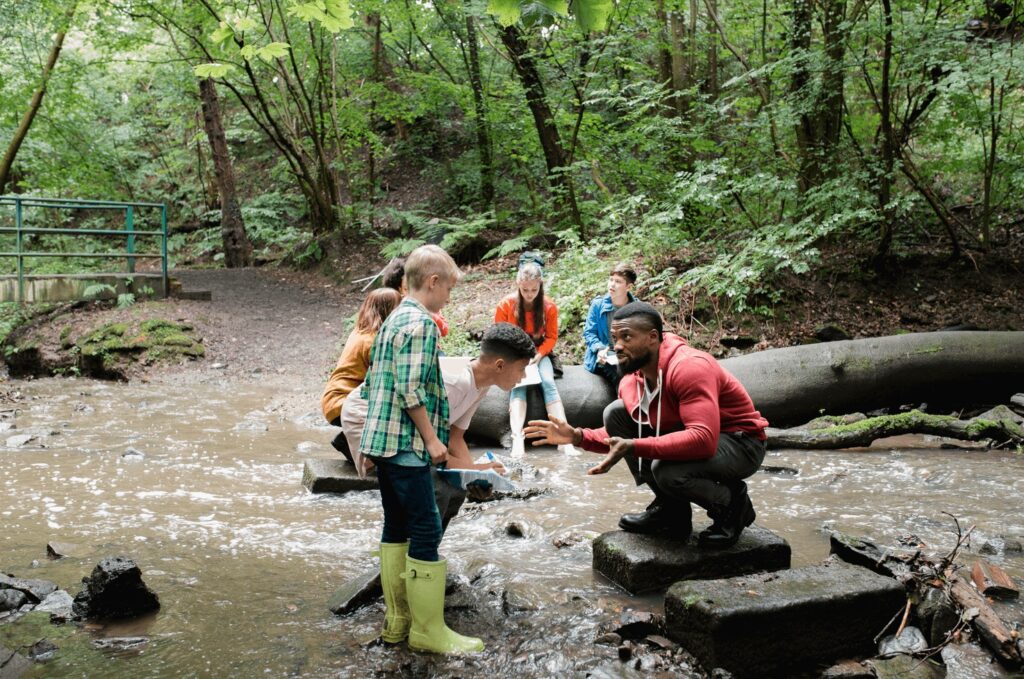
Connection with Nature
Research shows that early experiences associated with nature foster a lifelong connection with it. According to the studies, adults who had positive experiences with nature are more likely to take care of nature as adults. With the overwhelming presence of plastic pollution, the drive for a healthier environment is more important now than ever before.
Melati Wijsen started a movement that banned the use of plastic bags in the entire province of Bali when she was just a teenager; ridding beaches and shores of plastic that had once covered entire areas.
Health and Well-Being
Spending time in nature may improve children’s physical, emotional, and mental well-being. The benefits of forest schools may be difficult to measure scientifically, but most parents and educators know that children would spend their entire day outdoors given the chance.
Since nature schools allow children to be active, they can improve their stamina, balance, physical fitness, and gross motor skills. Skogsmulle practitioners have also reported that children have reduced stress levels, improved sleeping patterns, and better concentration.
There is Nothing Like the Outdoors
The concept of forest schools is relatively new, and some people may still view it as an “exotic” thing. For years, claims supporting the benefits of nature schools were mostly anecdotal, but recent studies support holistic learning and outdoor exploration for young minds.
There are still some challenges faced by forest schools. In some urban areas, for instance, forest schools may not be accessible to every child, especially those coming from low-income families. They may lack the funds for transport, food, high-quality outdoor kit, or exposure to outdoor knowledge.
However, forest schools can nurture meaningful experiences that can have a lifelong positive impact on a child’s social, mental, and physical development.
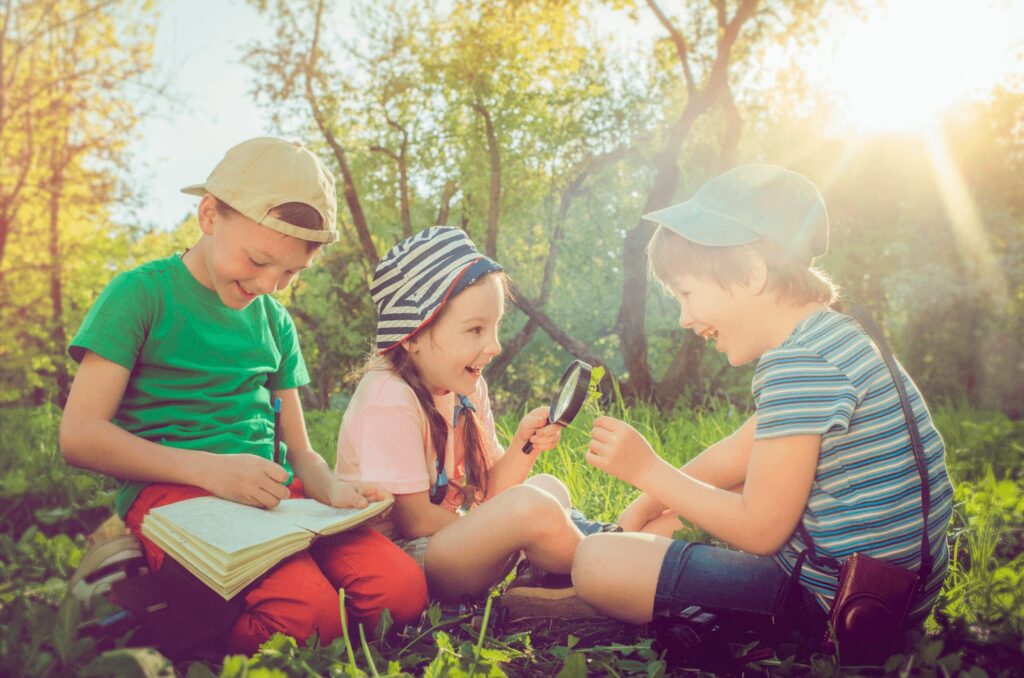
IC INSPIRATION
Skogsmulle’s approach is rooted in the belief that early experiences with nature lay the foundation for a lifelong connection with it.
Through exploration, play, and gentle guidance, forest schools nurture a deep appreciation of the beauty and importance of our environment. That’s what Sten Gösta Frohm had in mind when he developed this program in 1957.
More interestingly, Frohm wasn’t an educationalist or philosopher; he was an army sports officer working with the Association of Promotion of Outdoor Life or Friluftsfrämjandet. This apolitical, non-profit, and voluntary organization helped adults learn skiing. It’s here that Frohm started developing his ideas about an outdoor program for children aged 5 to 7.
He believed that children learn better from first-hand sensory activities. Frohm’s idea was to have forest schools that inspire kids to “love nature through fairy tales, songs, music, and games while out in the woods studying plants and animals.” Here, children would learn from other children and vice versa.
Most people, especially those who grew up in rural areas appreciate the importance of forest schools. For instance, in an interview with the Guardian, Magdalena Begh, a mother from the UK, said forest schools are a godsend for her kids.
“After the first session they were very excited – I’ve never seen them so happy after doing any after-school club like that,” Begh said.
We mentioned several physical, emotional, and mental benefits of outdoor learning and holistic education. It’s also worth mentioning the benefits of earthing or grounding therapy for children, such as reducing painful inflammation, boosting the quality of sleep, and even improving their sensory tools from tactile activities. Forest schools may be the best places to allow your kids to be rejuvenated by the power of the earth itself.
Health & Wellness
Gratitude: 15 Small Things That Make You Happy in Big Ways
Published
2 years agoon
7 November 2023
Life is not made up of big thing; but a million small things.
We usually focus on our major milestones and achievements. But life has small, unexpected moments that can bring immense joy to our lives.
Gratitude is a funny thing because we really don’t know whether it’s an emotion, behaviour, or virtue. Still, we know that we should feel and express it regularly and that it’s associated with happiness.
Of all the small things that make you happy, being grateful is the most powerful, because there is always an opportunity for it. It’s like the umbrella that all the little things in life fall under. In one second, you can savour each fleeting moment and appreciate the positive impact of the people around you.
Why is Gratitude Important?
Being grateful to people around you can do what no flowers, dinners, or jewellery ever can. Gratitude is so important in holding family and friends together, and it can even impact strangers in ways we can’t imagine, and may never know.
If you’re trying to reignite the romance sparks, express gratitude to your partner.
Numerous studies show that people who are grateful to their partner feel closer to them. The continual acts of gratitude open expressions from couples that allow them to feel comfortable in their relationship. This comfort makes it easier to express other forms of gratitude and a feedback loop is created. Gratitude is the number one predictor that a relationship will flourish.
Why is Gratitude Important for Mental Health?
Appreciating the small things in life can have remarkable effects on your mental health and resilience. Gratitude can help you bounce back in times when it may be justified to do things in the light of frustration. For instance, if you’ve ever watched a documentary about some indigenous communities, you’ll always see them smiling despite their adversity.
Being Grateful Makes Your Heart Stronger
Gratitude reduces stress, allows you to sleep better, and even strengthens your heart — metaphorically and literally. Positive emotions associated with appreciation reduce the risk of hypertension, sudden congestive heart failure, and even coronary heart disease.
Gratitude Helps You Get Back on Track When You Bounce Back
Being grateful allows you to get back to the things that are truly meaningful in your life. We are all human, and we all fall off sometimes. But when we appreciate, we go right back to where we need to be. It allows us to consider our values, remember our priorities, and think more about how to live better.
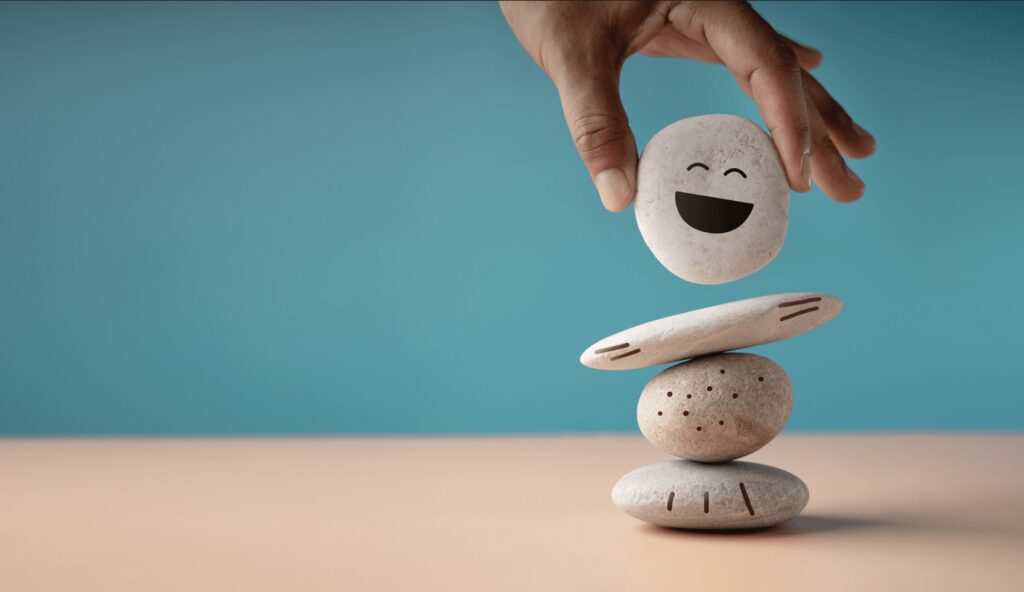
Unexpected, Delightful, and Small Things That Make You Happy
We’ve compiled pleasant, unexpected things that warm our hearts. It’s not about being on the receiving end of these things; sometimes, being the giver of happiness improves your well-being and satisfaction in life.
1. Your partner randomly shows affection.
Have you ever tried to reach for something and ended up reaching for it at the same time as your partner, accidentally touching each other, and then smiling? Or received a quick touch on your arm, a hug, or a kiss from someone you cherish?
These are the moments we yearn for. A touch from a loved one or a random show of affection can trigger the release of oxytocin or the “love hormone.” It signals trust and safety.
2. A familiar smell from your childhood
It’s raining, the fragrance of petrichor — the smell of rain on dry earth — hits you, and you remember the refreshing summer storms or playing in puddles as a child.
You’ve probably experienced such vivid memories of other scents like freshly baked bread, campfire smoke, scented candles, perfume, freshly cut grass, and more.
Smell is one of the strongest triggers for memories. According to a study, smells elicit powerful memories linked to your life’s story; they sometimes trigger recollections that are more emotional and evocative than any other sensory triggers like touch, visual, or touch.
Why do smells elicit such vivid memories? Scientists don’t know yet, but they hope to solve this mystery in the future.
3. A generous gesture
Generosity has a certain unexpectedness to it, and it’s so heartwarming when someone does something for us.
Simple things like opening the door for someone when their arms are full, letting a person go ahead in a line, or paying for the coffee of a person who’s behind you at a drive-through. All these little things make us feel what it truly means to be human.
4. Feeling understood
You’ve found a new song, movie, or book; you show it to your friend or partner, and they love it! Few things are as satisfying as feeling understood. It makes you feel emotionally safe and is akin to being socially “endorsed.”
You’ve probably heard the story about the “Angel of the Gap.” In five decades, Don Ritchie saved nearly 160 people from committing suicide at an infamous suicide spot in Australia. He did this by offering a simple gesture and inviting them over for a cup of tea at his home. Most of those people just wanted to feel understood or to have someone else listen to them.
5. Hitting an exact number
No matter what age you are, hitting an exact number when pumping gas or shopping is an unexpected happy moment. Perhaps it satisfies some OCD part in us, or maybe we want things that are easy to process and make sense of.
6. Eating a perfectly ripe fruit
If you’ve ever cut a perfectly green avocado or found a dark yellow peach, you know this feeling. It’s a feeling you should savour and appreciate.
7. Waking up rested and fresh
With our busy lives, most of us never get a long, satisfying break. When was the last time you woke up feeling clear-headed, rejuvenated, and relaxed?
Better sleep can improve your mental health, so it’s crucial to find ways to improve your sleep. You’ll be grateful later when you start waking up fresher and are ready to seize the day!
8. A work meeting that got cancelled last minute
Most of us are children at heart and will rejoice, at least internally, if that meeting — that should have been an email — gets cancelled at the last minute because the boss got held up.
You probably feel the same about long weekends—the joy when a public holiday comes before or after a weekend.
9. Wearing a favourite nightshirt or jeans
It’s hard not to appreciate the perfect pyjama or pair of jeans. Everyone has that jacket, hoodie, or t-shirt that they cherish.
10. The feel of fresh bed sheets
There’s nothing like the feel of cool, clean bed sheets on your bed.
Speaking of perfect…
11. Flipping your pillow at night
Even sleep tends to come faster when turning to the cool side.
12. Spending time in nature
Nature can also surprise us with unexpected, awe-inspiring moments of gratitude. Seeing a breathtaking sunset or sunrise can invoke deep emotions in us. Also, rainbows never fail to fascinate us, plus they mean specific things to certain cultures — perhaps if you’re thankful, you’ll one day find the pot of gold that leprechauns have hidden at the end of the rainbow.
Another thing that nature surprises us is the amazing feel of grass, soil, or sand on our feet. Besides the feel-good factor of walking barefoot at the beach, this practice of allowing our bodies to connect with the earth has been shown to have fantastic positive effects such as reducing painful inflammation and boosting sleep quality.
14. An important figure in your life saying they are proud of you
Most people yearn for external rewards like the “status” they get from money and power. But intrinsic rewards like a loved one telling you they are proud of you can be more fulfilling.
15. When someone says “thank you” from their heart
When someone gives, they are also the ones to receive. Your presence is an opportunity for others to do good things. This makes you a very important figure in people’s lives.
Take a deep breath. You’ve Got This!
Our lives have become so busy that it’s easy to take the little things for granted. However, these moments of joy and gratitude remind us to slow down and appreciate the wonderful little things around us.
If this article serves as a reminder to just one person, then that’s a win!
So the next time you flip over a pillow, be sure to think about us.

IC INSPIRATION
When discussing this topic with Adam Hamadiya, he said, “We have too much here, and we so often take it for granted. It is impossible to be anxious and grateful at the same time, so being grateful is a direct antidote to anxiety. “
Truer words have never been spoken. In a world that only seems to “reward” people with flashy stuff and material wealth, it’s easy to be drawn to such things and make them your primary aspiration.
But if you take time and appreciate the small things in life, you find that you’ve got so much to be thankful for in life. Do you have a partner “in crime” with whom you can share inside jokes? Does your friend check in on you occasionally, and vice versa? These are “small” things to be happy about.
Recently, my wife introduced me to her new favourite YouTube show, Best Ever Food Review Show. This is a show created by American filmmaker Will Sonbuchner, alias Sonny Side, who travels to various places worldwide, showcasing the “hidden” culture and foods in these places.
I’ve realized that no matter the economic situation of the people in these places, they are usually happy and generous. Undoubtedly, these people are facing unique issues, but when you see their happy faces, it’s hard not to introspect and ask yourself what you want in your life, and what you’ve achieved.
So, the next time you see a beautiful sunset, find that $10 in your pocket, or receive a smile or kind word from a stranger, take a moment to savour this unexpected joy. These small, unscripted moments are the threads that weave the fabric of our lives, making it more colourful and beautiful.

The Largest Body of Water in the Universe is Floating in Space. Can We Use It?

The Humane AI Pin is Here! So is Everything You Need to Know

3D Printing in Hospitals Has Saved Children’s Lives

Alef Model A Flying Car Pre-Orders Surge to a Whopping 2,850

Michelin Uptis: Airless Car Tires Emerging in 2024

Dire Wolf De-extinction: The Science Behind it and What’s Coming Back Next

How Do I Become an Entrepreneur? The 5-Step Guide No One Tells You About

10 Facts About Stars That Will Absolutely Blow Your Mind

January Brain Exists, But You Can Beat the Winter Blues. Here’s How

Upside-Down Trains? Why We Should Be Seeing More of Them!
Trending
-

 Science2 years ago
Science2 years agoThe Largest Body of Water in the Universe is Floating in Space. Can We Use It?
-

 Technology2 years ago
Technology2 years agoThe Humane AI Pin is Here! So is Everything You Need to Know
-

 Healthcare2 years ago
Healthcare2 years ago3D Printing in Hospitals Has Saved Children’s Lives
-

 Technology1 year ago
Technology1 year agoAlef Model A Flying Car Pre-Orders Surge to a Whopping 2,850
-

 Technology2 years ago
Technology2 years agoMichelin Uptis: Airless Car Tires Emerging in 2024
-

 Sustainability2 years ago
Sustainability2 years agoTeamSeas Uses Gigantic Robot to Battle Plastic Pollution
-

 Technology2 years ago
Technology2 years agoNew Atmospheric Water Generator Can Save Millions of Lives
-

 Sustainability1 year ago
Sustainability1 year agoArchangel Ancient Tree Archive: Cloning Ancient Trees to Build Strong Forests